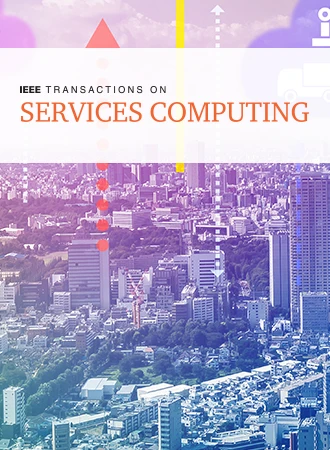Serv-HU:无人机即服务的服务切换
IF 5.5
2区 计算机科学
Q1 COMPUTER SCIENCE, INFORMATION SYSTEMS
引用次数: 0
摘要
本文章由计算机程序翻译,如有差异,请以英文原文为准。
Serv-HU: Service Hand-off for UAV-as-a-Service
In this work, we propose a UAV Service Hand-off scheme (Serv-HU) for the UAV-as-a-Service (UaaS) platform to provide seamless UAV services to the end-users. Traditionally, a service provider of a UaaS platform serves a limited application area due to the unavailability of adequate resources such as UAVs. Failing to deliver the service by the service providers for the requested entire application area by the end-user affects the reputation of the service providers. Consequently, the service delivery for a partial application area impacts the overall business, which is unacceptable for a Service-Oriented Architecture. To address this issue, we design a service hand-off scheme that enables the service providers to serve the entire requested application area by the end users with the help of other available service providers. We consider the presence of two types of service providers – Primary (PSP) and Secondary (SSP) in a UaaS platform. We apply a two-stage approach for the UAV service delivery to the end-users. In the first stage, a PSP optimally selects the SSPs for serving the uncovered application area by the PSP. The end-users request the service from the PSP, and on failing to provide the service for the entire application area, the PSP makes the service available from the optimally selected SSPs. In the second stage, we design an optimal pricing strategy that helps in determining the price charged to the end-users considering the involvement of PSPs and SSPs. We apply the Lagrangian multiplier method and Karush-Kuhn-Tucker (KKT) conditions to achieve the outcomes of these two stages. The simulation results depict that the charged price is reduced by $10.3 - 12.7\%$
求助全文
通过发布文献求助,成功后即可免费获取论文全文。
去求助
来源期刊

IEEE Transactions on Services Computing
COMPUTER SCIENCE, INFORMATION SYSTEMS-COMPUTER SCIENCE, SOFTWARE ENGINEERING
CiteScore
11.50
自引率
6.20%
发文量
278
审稿时长
>12 weeks
期刊介绍:
IEEE Transactions on Services Computing encompasses the computing and software aspects of the science and technology of services innovation research and development. It places emphasis on algorithmic, mathematical, statistical, and computational methods central to services computing. Topics covered include Service Oriented Architecture, Web Services, Business Process Integration, Solution Performance Management, and Services Operations and Management. The transactions address mathematical foundations, security, privacy, agreement, contract, discovery, negotiation, collaboration, and quality of service for web services. It also covers areas like composite web service creation, business and scientific applications, standards, utility models, business process modeling, integration, collaboration, and more in the realm of Services Computing.
 求助内容:
求助内容: 应助结果提醒方式:
应助结果提醒方式:


